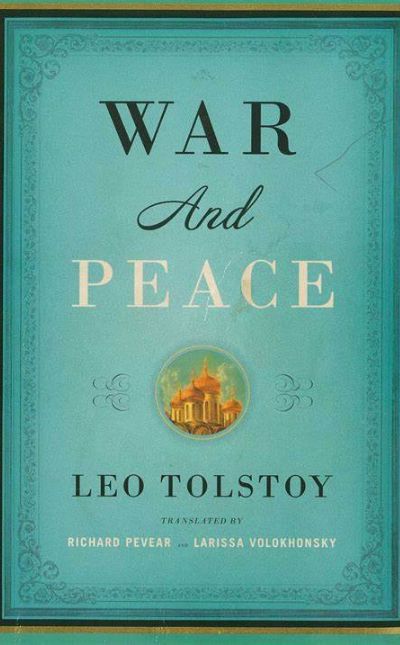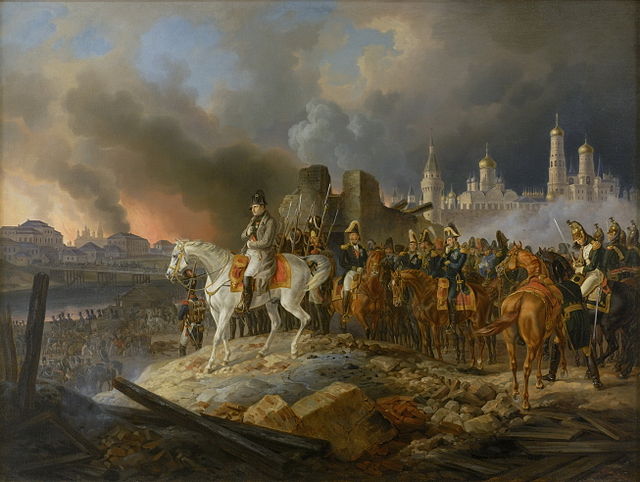From History to Humanity: How ‘War and Peace’ Resonates with the Essence of the Human Experience

Table of Contents
Leo Tolstoy, the renowned Russian author, is often credited with crafting one of the most iconic literary works in history: “War and Peace.” However, interestingly enough, Tolstoy himself resisted labeling his magnum opus as a mere novel. He believed that “War and Peace” encompassed a broader scope and significance beyond the traditional confines of a fictional narrative.

Leo Tolstoy’s epic masterpiece, ‘War and Peace,’ transcends the boundaries of time and place, offering a profound exploration of the human experience. Set against the backdrop of the Napoleonic Wars and Russian society, this monumental work delves into the depths of history while intimately examining the triumphs, struggles, and complexities of individuals. Through its grand scope and vividly drawn characters, ‘War and Peace’ becomes a powerful lens through which we can explore the multifaceted nature of humanity. It is in this union of history and humanity that the brilliance of Tolstoy’s magnum opus truly shines.
Q&A
As a reader and a law student, how did you connect with the intricate political and legal scenarios presented in “War and Peace” by Leo Tolstoy?
The first time I read “War and Peace” was quite the adventure! I was just 14, and I remember being so intimidated by the sheer size of the book. But as I delved into the story, I found myself completely engrossed in the world Tolstoy had created. The complexity of the characters, the vivid descriptions of the Napoleonic wars, and the intricate web of relationships kept me turning the pages. It was like stepping into a different era, experiencing the joys, sorrows, and tumults of life through the eyes of characters like Pierre, Natasha, and Andrei. That summer, I lived a thousand lives through “War and Peace,” and it was an experience I’ll never forget.
Tolstoy’s “War and Peace” is known for its complex characters and their development. Which character resonated with you the most and why?
Tolstoy’s portrayal of women in “War and Peace” is something that has always intrigued me. The women in the novel are as complex and nuanced as their male counterparts, each with their own strengths, weaknesses, and motivations. Natasha Rostova, for instance, is a character who undergoes significant growth throughout the novel. She starts as a naive and impulsive young girl, but as the story progresses, she evolves into a resilient and compassionate woman. Her journey, along with the journeys of other female characters in the novel, adds a layer of depth to the story that I find incredibly compelling.
“War and Peace” is a voluminous book with a rich tapestry of themes and subplots. How did your reading experience evolve as you navigated through these layers of narrative?
“War and Peace” has definitely influenced my perspective on life and human nature. Tolstoy’s exploration of themes like love, war, family, and the search for meaning in life resonates with me deeply. The novel has taught me that life is a complex tapestry of interconnected events, where every action has consequences and every individual has a role to play. It has also made me realize the importance of empathy and understanding in navigating relationships and conflicts. Even though “War and Peace” is set in a different time and place, the lessons it imparts are timeless and universal.
The Sophisticated Characters of War and Peace
One of the remarkable aspects of ‘War and Peace’ is Tolstoy’s ability to create characters that resonate deeply with readers. Each character, from the idealistic Pierre Bezukhov to the courageous Natasha Rostova, is crafted with intricate detail and complexity. Tolstoy captures the nuances of their desires, flaws, and inner struggles, presenting a vivid portrayal of human nature in all its dimensions. Whether driven by ambition, love, or the pursuit of meaning, the characters in ‘War and Peace’ mirror the intricate tapestry of the human psyche, inviting readers to reflect on their own desires, aspirations, and vulnerabilities.
The Coexistence of Personal Lives and Historical Events
While ‘War and Peace’ is firmly grounded in the historical context of the Napoleonic Wars, it is not merely a dry recitation of facts and battles. Tolstoy skillfully weaves the personal narratives of his characters into the larger historical canvas, demonstrating how individual lives are both shaped by and shape the course of history. The impact of war on the lives of ordinary people is keenly felt, reflecting the profound consequences that external events can have on the individual experience. By exploring the interplay between personal lives and historical events, Tolstoy reminds us that history is not an abstract concept but a living, breathing force that affects us all.
Universal Themes and Timeless Relevance
Despite its historical setting, the themes explored in ‘War and Peace’ possess a timeless relevance that resonates with readers across generations. Love, loyalty, ambition, and the pursuit of meaning are all themes that transcend time and culture, almost as if these feelings are a part of human nature. Tolstoy’s masterful storytelling ensures that the emotional depth and moral dilemmas faced by his characters remain relatable to readers even in the present day. The universal nature of these themes serves as a testament to the enduring power of ‘War and Peace’ as a work that continues to speak to the essence of the human experience.
Philosophical and Existential Reflections
At its core, ‘War and Peace’ is a deeply philosophical work that contemplates profound questions about life, death, and the nature of existence. Tolstoy’s characters engage in philosophical discussions and grapple with existential quandaries, inviting readers to ponder the meaning and purpose of their own lives. Through his exploration of these timeless questions, Tolstoy prompts us to confront our own mortality, to examine our values, and to consider the legacies we leave behind. ‘War and Peace’ serves as a gateway to philosophical contemplation, inspiring readers to reflect on their own place in the vast existence of humanity.
‘War and Peace’ stands as a monumental testament to the interconnectedness of history and humanity. Through its exploration of complex characters, the interplay of personal lives and historical events, and the timeless themes it addresses, Tolstoy’s masterpiece relates to ubiquitous human experience. As readers journey through its pages, they are reminded of the universal struggles, desires, and aspirations that we share. ‘War and Peace’ is more than a historical novel; it is a profound reflection on the human condition, inviting us to contemplate our own place in the grand tapestry of life.
“We can know only that we know nothing. And that is the highest degree of human wisdom.”
War and Peace
Part 5, Chapter 1
Look for more books in my book category or read some of my other reviews: The Hobbit: A Tale of There and Back Again – A Review or “Anna Karenina” – Unraveling the Depths of Love and Society
